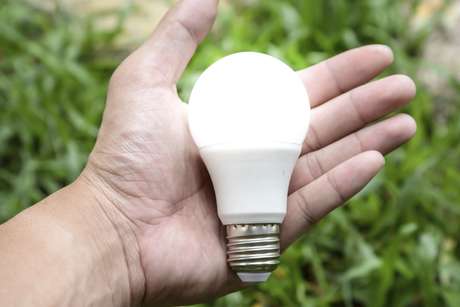Can you imagine if, instead of accessing the internet using the wi-fi, you can connect only by a light bulb? That’s the idea, proposed by Li-fi (Light Fidelity) technology, which utilizes light waves as a connection system with just one LED lamp.
The transmission using light has been around for some time, with the remote controls of televisions, for example. Since then, many laboratories have been working on ways to transmit a greater volume of information more quickly and efficiently. In 2011, the German Harald Haas, a professor at the University of Edinburgh, coined the term Li-Fi, seeking a proposal in that each lamp becomes an access point to the internet.
For the work system, the LED lamp will transmit the signal, causing small fluctuations in its light (in nanoseconds, totally imperceptible), and will have a device that has a receiver specific to this, a light sensor to interpret this sign. “None of our cell phones today have it,” said Thiago Ribeiro course, undergraduate coordinator Technology Systems for Internet Senac University Center.
Unlike Wi-Fi, which uses radio signals for transmission, with a current limit of 867 Megabits per second, Li-Fi works with no visible light, reaching much higher speeds . “As the technology is very new, multiple searches, looking for the best way to transmit the data, are taking place. Until last year’s speed record was 10 Gbps, which would be much faster than Wi-Fi, “says the coordinator. “This year, researchers from Oxford were able to transmit data at 224 gigabits per second. This would allow 18 films to be downloaded in 1 second. Difficult to predict what will be the speed of this technology when it becomes a commercial product available because it still depends on the standards to be adopted, but it sure will be much faster than Wi-Fi, “predicts the expert.
Another advantage of Li-fi is in the data transmission security, because the light does not go through walls, making it difficult to access “intruders”. Moreover, with the lamps sending signals to the cell in a closed environment, it is possible to know the precise positioning. “For example, a supermarket with Li-Fi can offer an application that you research a product and the app displays a precise map indicating how to get to the correct shelf. Shopping malls, airports and major events can also take advantage of it, “says Thiago course.
For now, Li-Fi only works well indoors. According to the coordinator, the Li-fi would be better used if it were complementary to Wi-fi. “In a company that replace the Wi-fi by Li-Fi, the cell would be completely disconnected from the network is placed in a pocket or drawer,” he explains.
Although promising, this technology is still in research. There is therefore a long way to go before it can be adopted as a standard by the market.

No comments:
Post a Comment